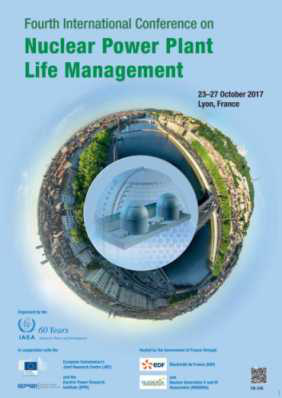Background
The world’s fleet of nuclear power plants (NPPs) is, on average, more than 20 years old. Even though the design life of an NPP is typically 30–40 years, it is quite feasible that many plants will be able to operate in excess of their design lives, provided that NPP engineers demonstrate — through analysis, testing and ageing management for the equipment and system upgrades, as well as increased vigilance — that the plants will operate safely. In the operation of NPPs, safety should always be the prime consideration. Plant operators and regulators must always ensure that plant safety is maintained and, where possible, enhanced during a plant’s operating lifetime.
The task of managing plant ageing is assigned in most Member States to an engineering discipline called plant life management (PLiM), which has gained increased attention over the past decade. The effective ageing management of structures, systems and components (SSCs) is a key element in PLiM for the safe and reliable long term operation (LTO) of NPPs. Plant life management can be defined in one sentence as the integration of ageing and economic planning for the purpose of maintaining a high level of safety and optimizing plant performance by dealing successfully with extended life ageing issues, maintenance prioritization, periodic safety reviews, education and training.
A PLiM programme is an effective tool that allows an operator to safely and cost-effectively manage ageing effects in SSCs for LTO. Such a programme helps facilitate decisions concerning when and how to repair, replace or modify SSCs in an economically optimized way, while assuring that a high level of safety is maintained.
The International Atomic Energy Agency (IAEA) organized earlier International Conferences on Nuclear Power Plant Life Management from 4 to 8 November 2002 in Budapest, Hungary, from 15 to 18 October 2007 in Shanghai, China, and from 14 to 18 May 2012 in Salt Lake City, United States of America. The participants of these earlier conferences appreciated greatly the opportunity they offered for information exchange in this field and recommended that the IAEA continue to organize future conferences regularly every four to five years. Accordingly, the IAEA is organizing the fourth conference in the series from 23 to 27 October 2017 in Lyon, France.
Objectives
The objectives of the fourth international conference on PLiM are to:
• Emphasize the role of PLiM programmes in assuring safety and improving reliable NPP operation;
• Identify the economic impacts of PLiM and LTO programmes, as well as methodologies for their evaluation;
• Provide key elements and good practices related to the safety aspects of ageing, ageing management and LTO;
• Provide a forum for information exchange on national and international policies, as well as on regulatory practices, and for the demonstration of strategies, including their application in ageing management and PLiM programmes for operating and new NPPs; and
• Assist Member States in further developing their PLiM programmes taking consideration of lessons learned and of impacts from the Fukushima Daiichi accident.

